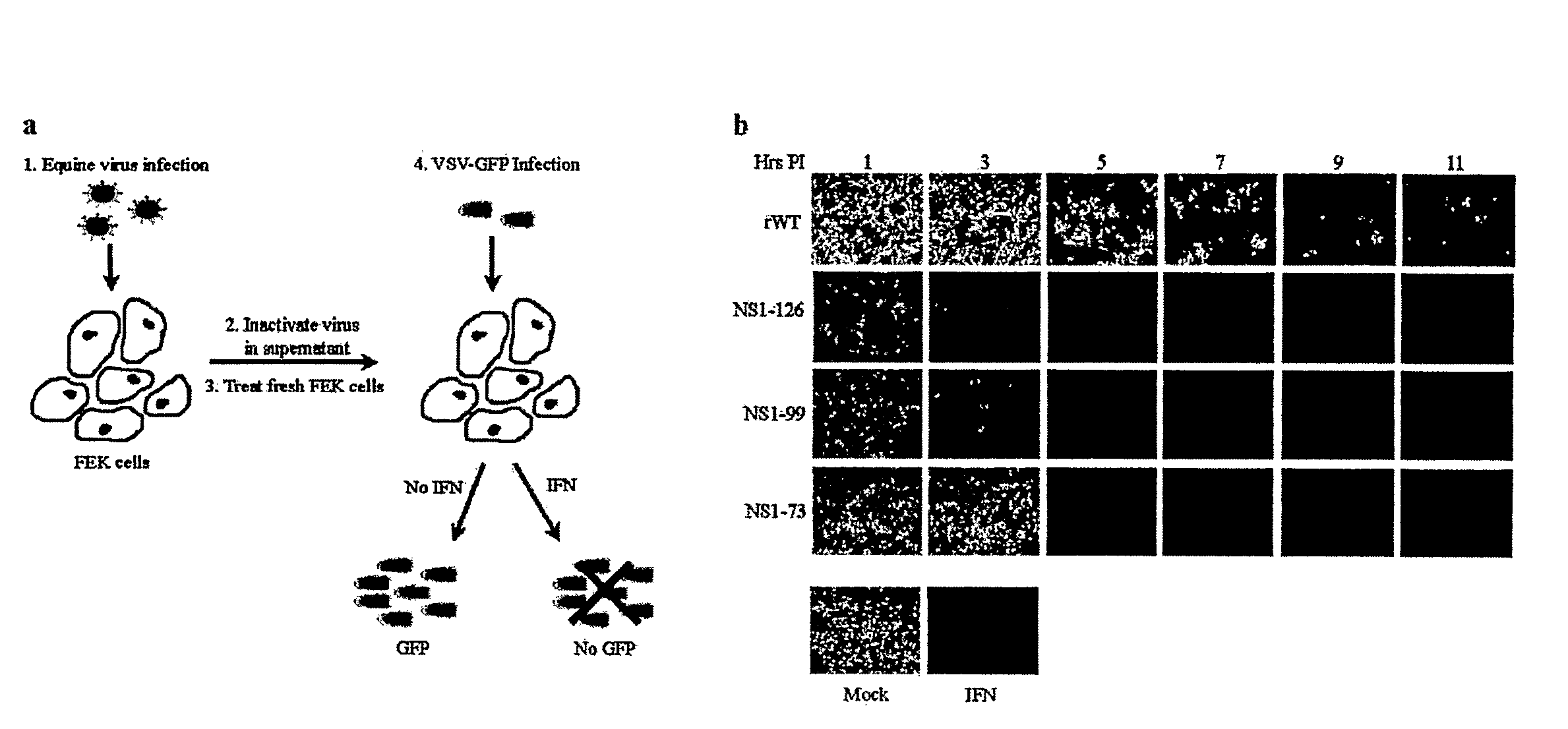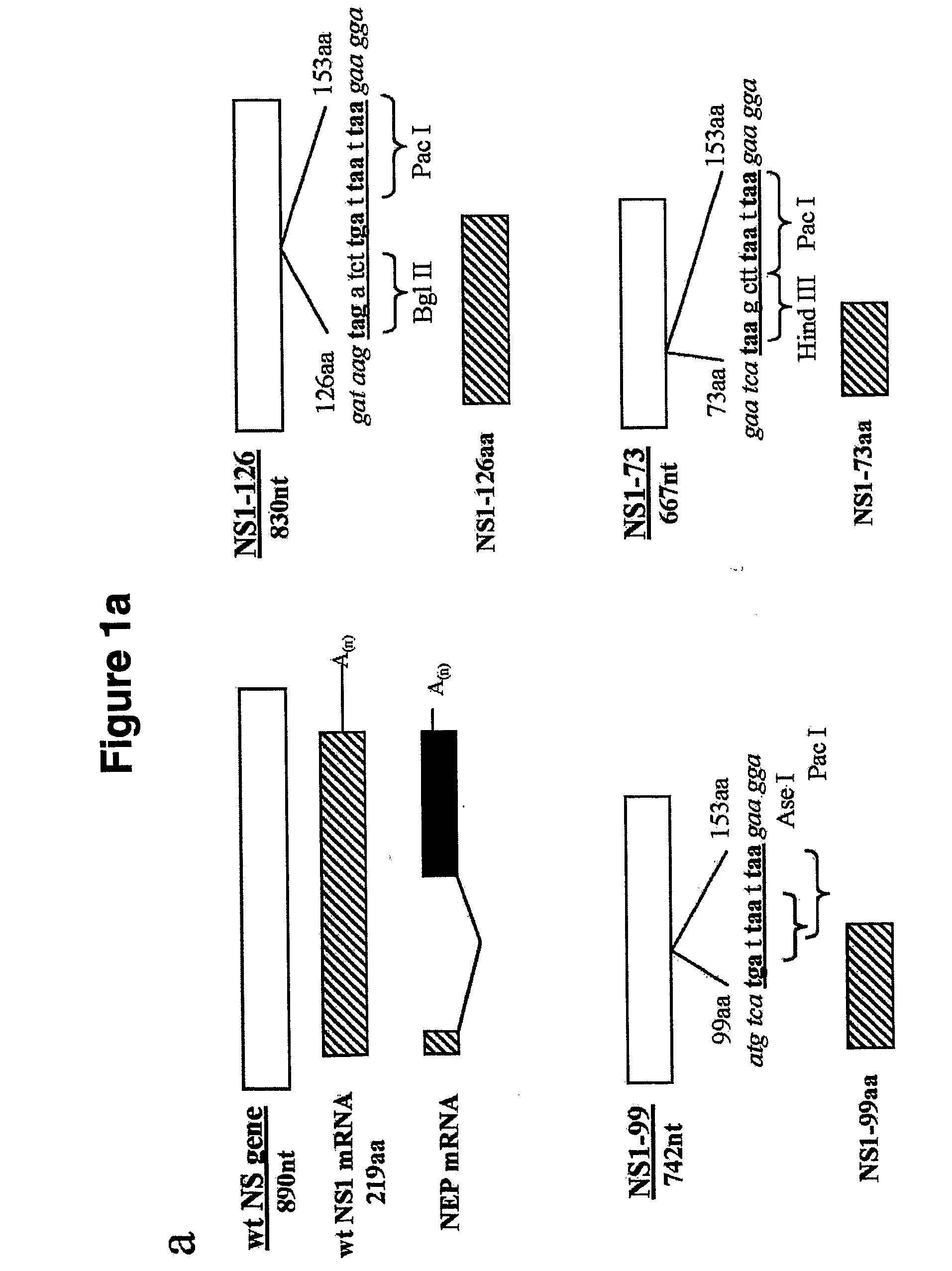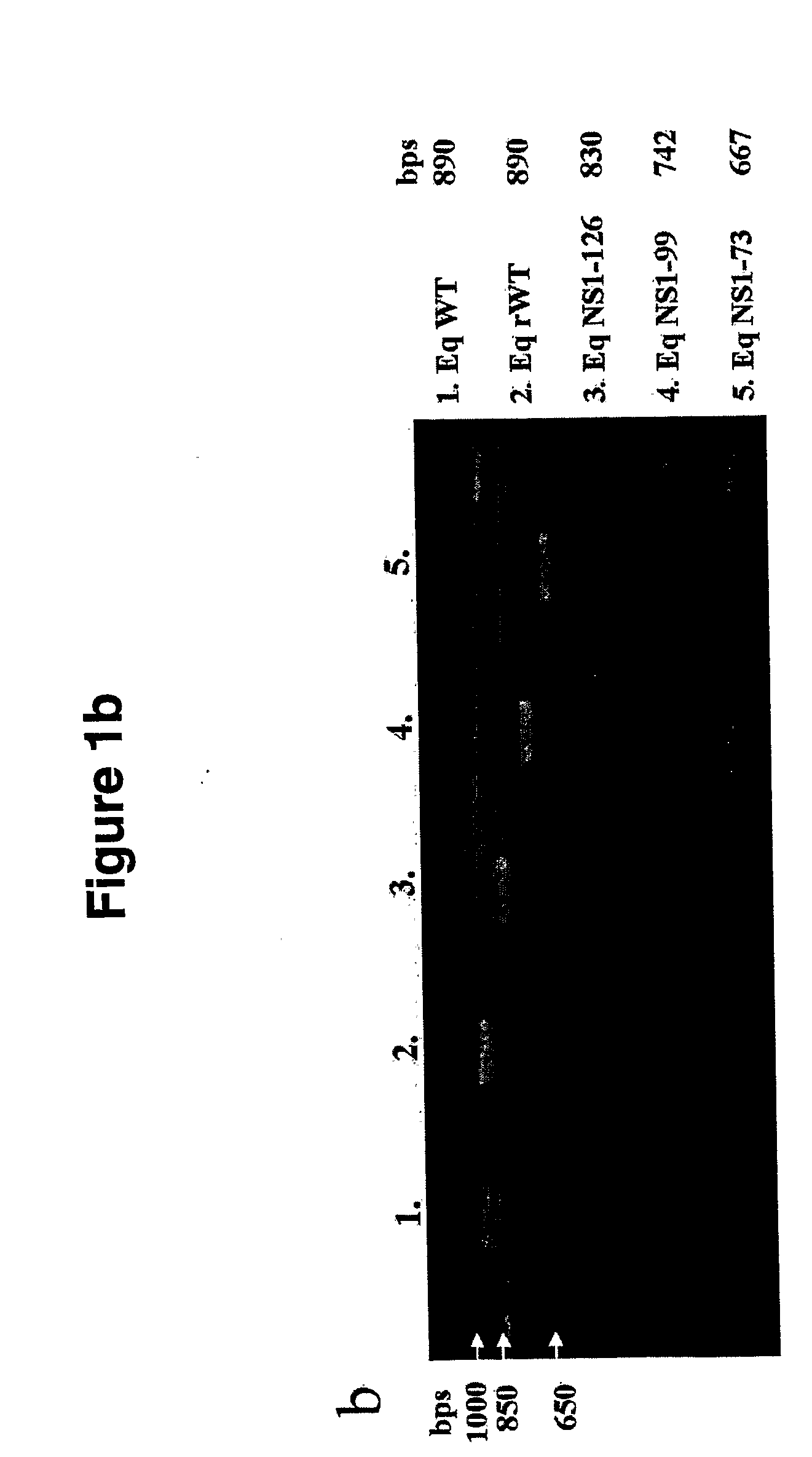Genetically Engineered Equine Influenza Virus and Uses Thereof
a technology of equine influenza virus and gene engineered equine influenza, which is applied in the field of attenuated equine influenza virus, can solve the problems of impaired ability to inhibit recombinant equine influenza virus, inability to replicate as efficiently, and inability to achieve beneficial features of such viruses, so as to achieve greater attenuation, decreased virulence, and impaired ability to antagonize
- Summary
- Abstract
- Description
- Claims
- Application Information
AI Technical Summary
Benefits of technology
Problems solved by technology
Method used
Image
Examples
Embodiment Construction
[0082]The present invention provides attenuated equine influenza viruses having an impaired ability to antagonize the cellular interferon (IFN) response, methods for producing such attenuated equine influenza viruses, and the use of such viruses in vaccine and pharmaceutical formulations. Such viruses are capable of generating an immune response and creating immunity but not causing illness or causing fewer and / or less severe symptoms, i.e., the viruses have decreased virulence. Therefore, they are ideal candidates for live virus vaccines. Moreover, the attenuated viruses can induce a robust IFN response which has other biological consequences in vivo, affording protection against subsequent infectious diseases and / or inducing antitumor responses. Therefore, the attenuated viruses can be used pharmaceutically for the prevention or treatment of other infectious diseases and / or IFN-treatable diseases.
[0083]The invention is based, in part, on the Applicants' discovery that equine influ...
PUM
| Property | Measurement | Unit |
|---|---|---|
| volume | aaaaa | aaaaa |
| time | aaaaa | aaaaa |
| time | aaaaa | aaaaa |
Abstract
Description
Claims
Application Information
 Login to View More
Login to View More - R&D
- Intellectual Property
- Life Sciences
- Materials
- Tech Scout
- Unparalleled Data Quality
- Higher Quality Content
- 60% Fewer Hallucinations
Browse by: Latest US Patents, China's latest patents, Technical Efficacy Thesaurus, Application Domain, Technology Topic, Popular Technical Reports.
© 2025 PatSnap. All rights reserved.Legal|Privacy policy|Modern Slavery Act Transparency Statement|Sitemap|About US| Contact US: help@patsnap.com



